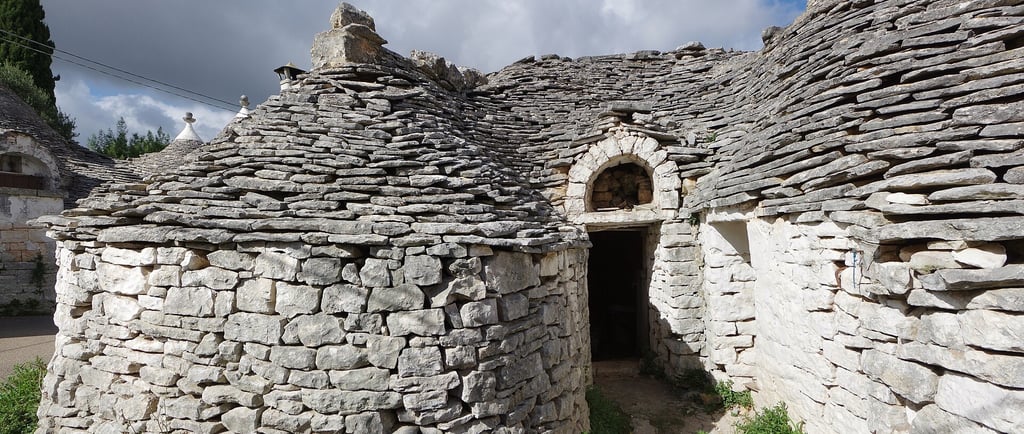A Village of Clever Builders 🛖✨ Trulli Tales
🏠✨ A follow-up story that connects the Fundamental Needs and Ways of Life chapter in the History Album and Human Geography in the Geography Album. 🌍🧱 It invites children to discover how people cleverly responded to the need for shelter by building Trulli—cone-roofed homes made entirely of stone, without cement, designed to be dismantled quickly to avoid heavy taxation. 🧠🛖 Set within the broader study of human ingenuity and adaptation, this story reveals the invisible thread connecting housing traditions around the world—from yurts on open plains to adobe homes in deserts—each a solution to a unique environmental or cultural challenge. 🌐✨ It also opens the door to exploring UNESCO World Heritage Sites, inviting children to research which sites are protected in their own country and why. 🏛️🔍
GEOGRAPHY STORIES HISTORY STORIES
7/7/20252 min read


Far away in the southern lands of Italy 🇮🇹, nestled between olive trees 🌿 and winding cobblestone paths, lies a village that looks like it leapt right out of a storybook. This village is called Alberobello—which means “beautiful tree.” But it’s not the trees that make this place famous…
It’s the houses. 🏠 Tiny, whitewashed homes with mysterious cone-shaped roofs rise from the earth like ancient stone hats. People walking through Alberobello often wonder: 🌀 Why do all the houses look like this? Why are they made only of stone, without mortar or cement? And what are those strange symbols painted on the roofs?
To understand the answer, we need to travel back in time… ⏳ Hundreds of years ago, this land was ruled by a powerful nobleman who demanded high taxes on every house that was built. The people of Alberobello were poor farmers 👨🌾, shepherds 🐑, and stoneworkers. They needed homes, but they couldn’t afford the king’s taxes. So they found a solution hidden in plain sight… 🧱🧠
Using limestone from the land, they built homes without any cement. That meant if the tax collector came, the entire house could be taken apart quickly, just by removing a few stones from the roof. 💨 No roof, no house = no tax! 😏
When the inspectors left, the villagers would rebuild their homes again by hand—quietly, patiently, stone by stone. This style of building was called dry stone construction, and their little dome-roofed homes became known as Trulli. The word “Trullo” (singular) comes from the Greek word troulos, which means dome—referring to the round or conical shape of the roof.
As time passed, families began painting strange symbols on the roofs of their Trulli. Some were suns ☀️, moons 🌙, hearts 💖, or stars ⭐. Some were ancient Christian or magical symbols. Were they for protection? Good luck? Or maybe just ways to tell one house from another? Children grew up hearing legends told by their grandparents. Some believed the roofs helped speak to the stars… 🌌Others were meant to bring luck, fertility, or prosperity to the family. Or attract positive energy like the sun.
🔍 Have you heard of UNESCO? This is a special organization that helps protect places in the world that are very old, very special, or very important to human history and nature. Just like the Pyramids of Giza in Egypt 🇪🇬, the Great Wall of China 🇨🇳, or Machu Picchu high in the Andes of Peru 🇵🇪, the Trulli of Alberobello remind us that people everywhere—across time and place—have found unique and creative ways to build, survive, and tell their stories through the structures they leave behind. 🏛️✨
Trulli are more than a clever tax trick or a pretty building, they tell a story of: Human ingenuity 💡 The need for shelter and safety 🛖 Adaptation to the land 🌍 And the quiet bravery of ordinary people 🧑🌾
🏛️ I wonder... if we have UNESCO World Heritage Sites in our country… 🔎 You can search in UNESCO’s official website to find out. 🌍 Create a map of national heritage sites around. We can also plan a going out and visit them. 🌀 I wonder... if we can find homes like the Trulli somewhere else around the world ?
🛖 Possible Follow-up Explorations
Fundamental Needs Chart (Shelter)
Invite children to explore how humans satisfy the need for shelter in different environments and what materials they use to build their homes :
Igloos (Arctic) ❄️
Yurts (Mongolia) 🐫
Adobe homes (Southwest USA/Mexico) 🏜️
Treehouses (tropical forests) 🌴
Bamboo homes (Southeast Asia) 🎍
Cave dwellings (e.g., Cappadocia in Turkey) 🏞️
With Montessori joy,
Vanina 😊

